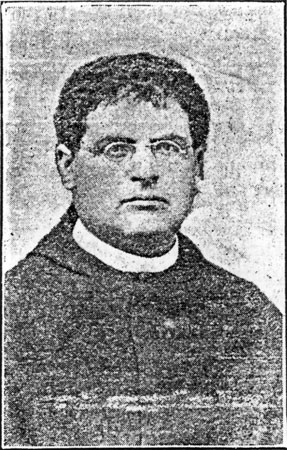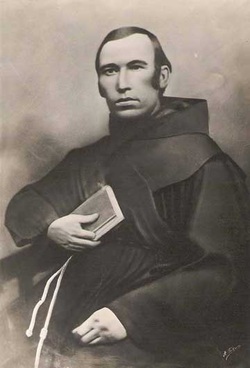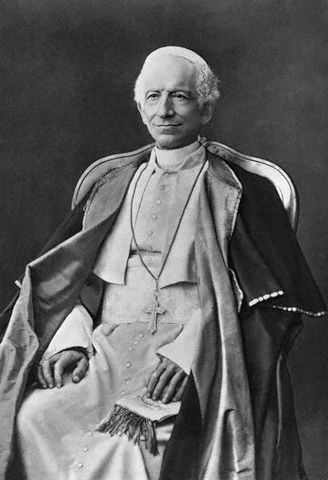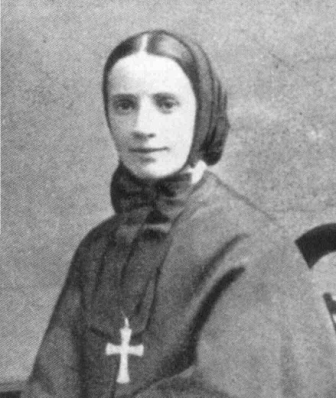

MADONNA DI PIERNO CELEBRATION
REMEMBRANCE OF THOSE THAT GUIDED THE FAITH
BY: TOM FRASCELLA AUGUST 19, 2012
This year the San Felese Society of N.J. will celebrate a number of significant milestone anniversaries. To start the year 2012 marks the 150th anniversary of the first San Felese settling in Trenton in 1862. This year also marks the 110th anniversary of the founding of our organization in April of 1902.
Our Society has two other anniversary dates which relate to the celebration of the feast of the Madonna Di Pierno. 2012 represents the 124th year that this feast day has been “officially” celebrated in America. By official I mean with the guidance and participation of clergy, initially at St. Joachim’s Church in New York City. In Trenton our community is celebrating the 110th anniversary of the feast at Trenton’s St. Joachim’s Church. The 110th anniversary of this feast in Trenton coincides with the establishment of St. Joachim’s Church. Tracing this celebration back to the origins of St. Joachim’s reflects that the majority of the parishioners at that time of the founding of this Church were San Felese.
The people of San Fele and surrounding communities have been celebrating the Madonna Di Pierno feast day since the year 1139 A.D. As such it is one of the oldest uninterrupted annual Marian devotions in the world. Based upon this extensive history of community devotion it is of no surprise that when San Felese began emigrating in the first half of the 19th century they brought their devotion to the Madonna Di Pierno with them.
As the first of our ancestors arrived in America in the middle of the 19th century they found an American Catholic Church struggling to find its own national identity and inundated by competing foreign cultural traditions. The symbol and ritual traditions of the poor rural southern Italians like the San Felese were not embraced as appropriate by the majority English speaking culture within the American Catholic Church. This was very distressing to our ancestors who in leaving so much of their culture and heritage behind were not willing to abandon their traditions of faith.
The initial wave of Italian immigrants was relatively small, only 75,000 of the 4.5 million Italian immigrants who would eventually come to the U.S. arrived between the years 1850-1880. These early arrivals who were non English speakers naturally turned to the few Italian immigrant religious sisters and brothers who were available for help. The important role that the early 19th century Italian immigrant clerics played, not just for Italian immigrants but for all Catholic immigrants, should be acknowledged and their efforts recognized. Hopefully, this small article can shed some light on their efforts.
Italian clerics began arriving in the U.S. in response to the growing crisis mass immigration from Catholic countries in Europe. Too few native clergy were available at the start of the mid-19th century mass immigration surges forcing local Bishops to seek assistance from Europe. In the early 1850’s Bishop John Timons of Buffalo reached out to the Franciscan Provinces of Europe for religious support to minister to the expanding population of Catholics especially non English speaking immigrants in his Diocese. His primary concern in 1850 was the flood of German Catholics arriving in his Diocese. The Franciscan Province in Umbria responded and began planning to develop the Order’s first U.S. Province. A local Buffalo benefactor pledged $5,000 and several thousand acres of land for the Order to establish their primary foundation in upstate New York.
In 1855 four Franciscan priests arrived in Buffalo. They were Fr. Sixtus da Gagliano, Fr. S. da Prezza, Br. Salvatore da Manarola and the priest in charge Fr. Panfilo da Magliano dei Marsi. By 1858 their numbers had swelled to fourteen Italian priests and brothers at which time Fr. Panfilo established the Order’s first U.S. College and seminary, St. Bonaventure. Under Fr. Panfilo’s guidance the Order’s American presence continued to grow expanding in numbers of Italian priests, brothers and sisters from the Order’s European Provinces. Native vocations and priests from other national backgrounds also steadily increased the Orders American presence. However, between 1855 and 1880 a majority of the Orders clergy were of Italian origin.
In 1861 the Order had established itself well enough for Fr. Panfilo to formally incorporate the Order as a Franciscan Province. In so doing he gave the new Franciscan Province the name the “Custody of Our Lady of the Immaculate Conception”.
In the mid 1860’s the Bishop of Newark, a diocese which had been created in 1851, invited the Order to expand their presence into New Jersey. Again this was in response to the Diocese experiencing a rapid growth of non English speaking mostly German immigrants. The Order immediately began to make plans for its expansion into New Jersey selecting Fr. Pietro Jachetti to take the lead. With New Jersey Bishop John Roosevelt Bayley’s consent Fr. Jachetti along with three Franciscan sisters from a Philadelphia convent and lead by Sister Hyacintha arrived in Trenton in 1869. Fr. Jachetti’s initial assignment was as pastor of the German speaking “personal/national parish” of St Francis of Assisium Church on Front St. The sisters were charged with setting up a parochial school for the immigrant children within the parish. It should be noted that the parish and school immediately began to flourish. This despite a growing dire national economic condition that marked the 1870-1875 period. These were the years of the U.S. Grant presidency and marked the worst economic downturn in the young country's history. In terms of severity the economic down turn of this period was only surpassed by the Great Depression which started in 1929.


Fr. Jachetti Fr. Panfilo
Although Fr. Jachetti would remain in the pastoral position at St. Francis for another five years he and the good sisters were clearly not limiting themselves to just parish duties. As previously said they had come to New Jersey to seek opportunity to expand the Franciscan mission. Within a year of assuming the reigns at St. Francis Fr. Jachetti and the sisters proposed to their Provincial superiors and the Bishop that they be allowed to fundraise, plan and build what would be Trenton’s first hospital. The poor housing, working, and economic conditions in the city at the time made health care, especially for the poor a priority in their assessment. Again they proposed this ambitious idea despite the economic Depression gripping the country. With all of the difficulties noted they still managed to get permission and started the project. In 1871 the cornerstone of St. Francis Hospital was laid. Fr. Antonio Grasselli Provincial Minister came down from New York and laid the cornerstone of the building. He also gave a short speech to the assemblage, in German, a reflection on the make up of the Chambersburg neighborhood where the hospital was situated. The building project, administered primarily by Sister Hyacintha was completed in 1874 and the hospital started receiving patients that same year.
Later in 1874 Fr. Jachetti resigned as pastor of St. Francis Church in order to devote himself to the further expansion of Franciscan foundations in New Jersey. Between 1874 and 1879 he worked at what could be called developing the Franciscan compound in Trenton. In that period he purchased on behalf of the Order property on Chestnut Ave. There he built a small chapel, school, convent, and friary. The friary was also intended by the Order to house a stadium for seminary preparation. Recognizing the population growth in the Chambersburg area, at this time not yet a part of the City of Trenton but a part of Hamilton Township, the Most reverend Bishop of Newark asked the Franciscan clergy living at the Chestnut Avenue compound to offer mass and provide other sacramental and pastoral care. In 1875 the Franciscans under Fr. Jachetti’s guidance began ministering to those living in this rural but developing community. To be clear at this time the population of the area was not Italian, with regard to Trenton’s Italian population by 1879 roughly only forty or fifty Italians resided in Trenton, about sixty per cent of whom were San Felese. Most of the Italians living in Trenton prior to 1879 lived in the Lamberton street area of the City. Although the Italians were few in number Fr. Jachetti’s ministry drew the community toward his Chestnut Ave Franciscan compound creating the beginning of the Italian “Burg”. As an example, my great grandparents Pietro and Angela, born in San Fele immigrated to Trenton in the 1870’s as children and they lived initially in the market and Lamberton Street area of the City. In April 1882 they married in Our Lady of Lourdes parish in a ceremony officiated by Fr. Jachetti. They may very well have been the first “Italian” couple married in the “Burg”. Thereafter when they were able to purchase their first home it was in the Chambersburg section. In this early period most of the Italians starting to live in the “Burg” were coming from either the town of San Fele in southern Italy or Monteleone di Spoleto in northern Italy, Fr. Jachetti’s hometown.
The decade of the 1880’s saw a four fold increase in the number of Italians immigrating to the U.S. from the decade before. However, Trenton’s Italian population increased ten fold during that same time. In Trenton we think of Fr. Jachetti’s activities during the 1880’s being occupied with the building of Our Lady of Lourdes Church, a project that he worked on start to finish between 1879 and 1891. Less appreciated is the fact that as lead Franciscan cleric in New Jersey he and his associates were responsible for the founding and construction of a dozen Franciscan parishes in New Jersey. To name a few of those parishes, St. Peter’s in Point Pleasant Beach, St. Mary’s in Vineland, St. Anthony’s in Hoboken, St. Stanislaus in Trenton, Sts. Peter and Paul in Camden, St. Joseph’s in East Camden, St. Ann’s in Elmer, and St. Peter’s in Riverside. St. Peter’s was established with the support and intervention of the Bishop of Philadelphia Bishop John Nepomucene Neumann, later St. John Neumann. Riverside was a summer resort for Philadelphians.
As part of their ministry the Italian Franciscans were acutely aware of the needs of the ethnic communities that were developing within these New Jersey. Most of the above parishes were established in developing ethnic communities. For the Italian Franciscans who were used to operating in a multi- national/ethnic Europe respecting the culture and heritage of different groups was basic. However, the Italian Franciscans found that they were ministering in “ethnic/ national” parishes at a time when the U.S. was undergoing a negative view of new immigrant groups. Many people in the U. S. were afraid of or concerned about the infusion of these foreign cultures into the American main stream. A growing so-called “Nativist” anti-immigrant American political attitude was developing within the country. Among American Bishops a religious counterpart of sorts known as “Americanism” was also developing which was opposed establishing non English speaking “national” parishes. The late 1870’s and 1880’s saw American Bishops ban many non “American” ethnically based religious celebrations. This was especially true of the traditional Italian patron saint festivals which were regarded as too close in practice to “idol” worship.
The newly elected Pope Leo XIII, ( Vincenzo Giocchino Luigi Pecci ) elected Pope1878, died 1903, was well aware of the growing rift between the Vatican’s approach to a more universal tolerance of ethnic/ national traditions and the American view. He was adamant that the American Bishops position was unacceptable theology and actively wrote and pressured the Bishops to conform to the official Vatican view. Nevertheless many/most American Bishops persisted in the alternative approach. Unfortunately, some of the early pioneering priests including many of the Italian Franciscans got caught in the crossfire. Many of these Italian priests who had outstanding careers in the Church saw those careers crushed. By 1880 the majority of Franciscan priests in the U.S. were no longer Italian. The Italians Franciscans were a minority and began to be purged from U.S. leadership positions. In 1885 the new leadership of the Province attempted to remove Fr. Jachetti from his role and responsibilities. The intervention of the recently installed, 1881, Trenton Bishop Michael O’Farrell whose principle concern was for the successful completion of the Franciscan projects underway delayed that Provincial action.
By 1885 Pope Leo XIII had become so concerned and frustrated with the situation in the U.S. that he directed Cardinal Giovanni Scalabrini to create a mission of Italian priests and nuns to directly serve the Italian immigrants in the U.S. In essence he was forcing the Bishops to comply with his directives by planting ethnic based ministries within their Dioceses. The so called Scalabrini nuns and priest began arriving in the U.S. in 1885 and quickly established their first Italian “national” Church, in New York’s lower East side. Among the Italian priests and nuns who arrived in New York was a young Nun by the name of Francesca Cabrini, first U.S. citizen to become a saint. In a not so subtle gesture of purpose that first Italian national parish was named by these sisters and priests St. Joachim, in honor of Pope Leo XIII’s given familiar name Gioacchino.
In August 1888 with the support and encouragement of the Scalabrini priests and sisters of St. Joachim’s parish in New York City the Potenza Society marched in religious procession on the feast day of San Rocco. The priests of the parish had been told directly by the Diocese that a religious procession of this type was banned. Nevertheless, the procession was held and has been held every year since by the Potenza Society. The Society is an umbrella group of all of the Lucanian village societies that were in residence in that part of New York City. Among the participants were a sizeable number of immigrants from the Lucanian village of San Fele. The participants on that day also carried banners and pictures of their village patrons. The San Felese carried a banner of the Madonna di Pierno. The San Rocco feast day is celebrated annually on the same date as the Madonna Di Pierno feast and for many years after the two were celebrated jointly in New York City’s “Little Italy” community.


Pope Leo XIII St. Francesca X. Cabrini
In 1892 the Church of Our Lady of Lourdes was completed in Trenton. A short time later the parish name would be changed to the Church of the Immaculate Conception to match the name of the Franciscan Province. Fr. Jachetti was removed to Albany before the dedication by his Provincial superiors. In 1891 Fr. Jachetti was reassigned to the newly formed Italian parish of St. Francis in Hoboken as an assistant pastor. Those of the original Italian priests that remained in the U.S. after 1890 generally were directed to non leadership pastoral duties in predominately Italian parishes by their American Provincial superiors. For Fr. Jachetti that meant serving as an assistant to priests that he had previously lead. Immaculate Conception parish in 1890 had only a small but growing Italian minority population of 400-500 and therefore was not considered an Italian parish. The continued ban on recognizing Italian cultural and religious traditions conducted by newly assigned pastor strained relations with the resident and growing Italian community within the parish.
In 1895 the new leadership of the Franciscan Province nullified the financial and ownership agreements that Fr. Jachetti and the Italian Franciscans had entered into in 1865. The new agreement generally put most of the ownership of New Jersey’s Franciscan parishes with the exception of a portion of the land and buildings of the Immaculate Conception complex under Diocese ownership
By 1900 the Chambersburg Italian community had grown to about 2,500 people, sixty percent San Felese. Unable to enlist the cooperation of the non Italian pastor of Immaculate Conception in honoring their cultural religious traditions the community petitioned the Bishop for permission to form an Italian national parish. By 1900 the American Bishops with some continued reluctance clearly understood what Pope Leo XIII’s position was. The community was granted permission to form a new Italian national parish which they named St. Joachim. The Lucanian feast day of the Madonna Di Pierno has been celebrated in St. Joachim’s Church in Trenton every year since.
Father Jachetti after his removal from Immaculate Conception Church continued on in his American ministry for several years. He remained a much respected and beloved priest at St Francis parish in Hoboken. He and the other Italian Franciscan priests who were purged from leadership roles were never heard to complain. Eventually he returned to his native Franciscan Province in Umbria were he died in1921. His body now rests in his home town of Monteleone di Spoleto in Umbria in the Church of St. John. On a separate note Fr. Domenico Marzetti O.F.M. first pastor of St. Francis Church in Hoboken and with whom Frather jachetti got on with very well, upon his death was buried in the Franciscan burial plot in Our Lady of Lourdes Cemetery in Hamilton. The Provincial plot made possible by Fr. Jachetti’s actions.
Fr. Jachetti’s presence in Trenton resulted in many immigrants from that town settling in Trenton. The Monteleone Society is the second oldest Italian American Society in the Trenton area. In an odd twist of fate the parishes of St. Joachim and Immaculate Conception were merged by the Diocese of Trenton in 2005. The pastor of St. Joachim Fr. Jeffrey Lee, himself a native of St. Joachim’s parish and whose maternal side descends from immigrants of Monteleone di Spoleto became the pastor of the merged parish now known as Our Lady of the Angels Parish.
In 2010 as part of the celebration of the fifth anniversary of the forming of the new parish Fr. Lee installed a plaque in the old Immaculate Conception Church acknowledging Fr. Jachetti’s contribution to the building’s construction. The plaque installed 130 years after Fr. Jachetti began the Church’s construction was and is the only testament within the Church to the efforts and success of this extraordinary and humble servant of the Church. We should all thank Father Lee for this long overdue tribute and recognition of Fr. Jachetti.
* I would like to thank Father Lee for his review and contributions to this article. In a later article I hope to delve further into the ministry of Fr. Jachetti examining his intellectual contributions to the Franciscan Ministry’s formation in the U.S.
© San Felese Society of New Jersey